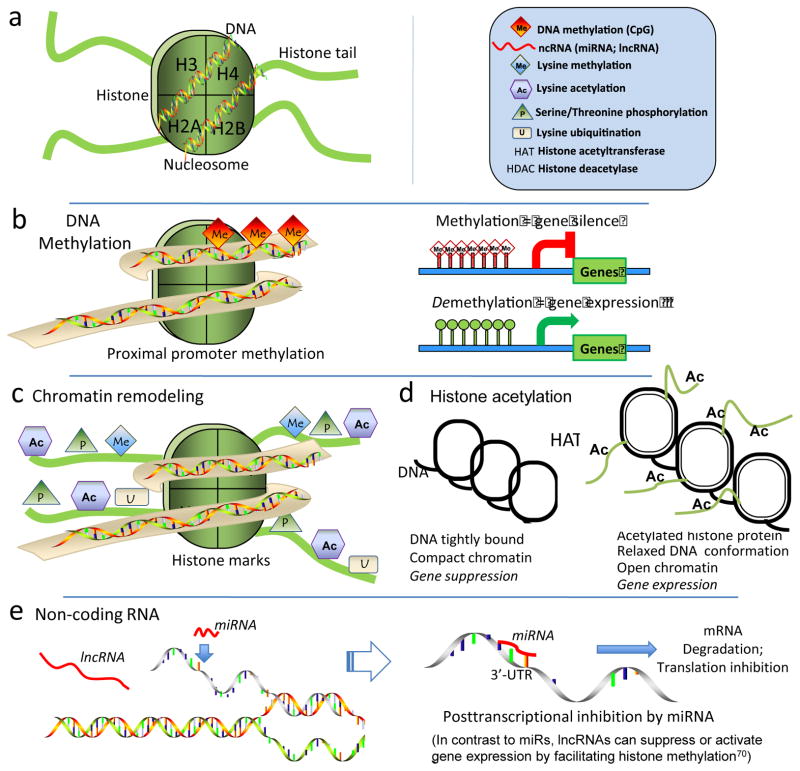Figure 2.
Epigenetic mechanisms. a. Nucleosome structural elements. DNA is wrapped around each histone octomer protein that has basic amino acid-rich tail domains. b. Proximal promoter DNA methylation at CpG islands results in gene silencing by transcriptional repression. c. Posttranslational histone marks on N-terminal histone tails constitute a histone code; they include acetylation, phosphorylation, ubiquitylation and sumoylation that remodel chromatin by changing histone protein-DNA association which influences transcriptional regulation. d. Chromatin remodeling by HATs and HDACs. Histone acetylation relaxes tightly wound compact DNA to enable access of transcriptional regulators. HDACs deacetylate to restore compact chromatin and prevent transcription. e. Posttranscriptional RNA-based mechanisms include short (microRNAs) and long noncoding RNAs (lncRNAs). miRNAs usually target the 3′-untranslated region of mRNA promoting transcript degradation and also translation destabilization. lncRNA facilitate changes of histone methylation through complex mechanisms that can result in enhanced or repressed gene expression depending upon the histone mark.

